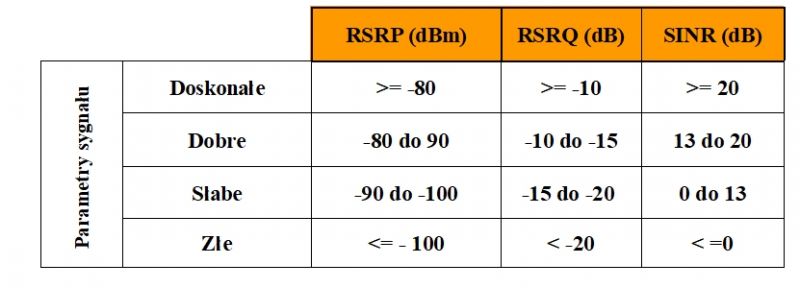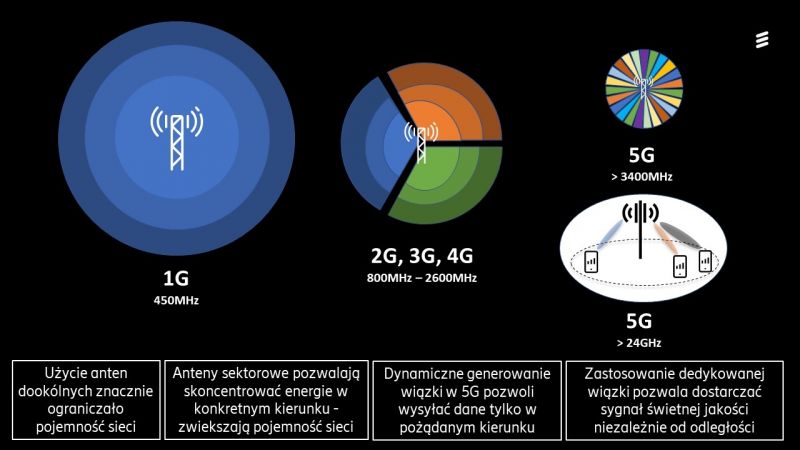LTE technology
LTE - Long Term Evolution (LTE) - a standard for wireless data transmission, which is the successor to third generation systems, developed by the 3GPP consortium. The main objectives of the new standard are to increase the possibilities of mobile telephony by increasing the speed of data transfer, reducing delays, increasing the spectral efficiency of radio links, reducing data transmission costs, and simplifying the architecture.
Frequency ranges allocated to mobile network operators - Link to UKE website
Signal parameters on frequencies used by Polish ISPs for 3G/LTE:
RSRP (dBm) - Reference Signal Receive Power - measure of signal strength
Device readings -> from -140 to -44 dBm
more than -79dBm [more than RSRP62] - very close to BTS
from -80dBm to -90dBm [RSRP61 - RSRP51] - good
from -91 to -100 [RSRP50 - RSRP41] - you need to think about changing the location of the modem / router or buying an antenna
less than -100 [less than RSRP40] - very bad, practically impossible to work.
RSRQ (dB) - Reference Signal Received Quality - measure of signal quality
Indication range - from -19.5dB to -3 dB
more than -9dB - very good, close to BTS
from -10dB to -15dB - good
from -16dB to -20dB - you need to think about changing the location of the modem / router or buying an antenna
below -20dB - very bad, practically impossible to work.
SINR (dB) - Signal-to-Interference-plus-noise Ratio - a measure of the quality of the utility signal relative to noise interference
more than 21dB - very close to BTS
from 13dB to 20dB - good
from 0dB to 12dB - you need to think about changing the location of the modem / router or buying an external antenna
less than 0dB - very bad, practically impossible to work.
RSSI (dBm) - Received Signal Strength Indicator - auxiliary measure; indicator of the received signal strength, including interference, which translates poorly into the power of the useful signal delivered to the user; higher data transfer activity, higher RSSI
more than -57dBm
from -58dBm to -79dBm
from -80dBm to -96dBm
less than -96dBm
Sample signal levels and LTE link parameters
Signal level and connection quality with built-in antennas - Huaweii router:
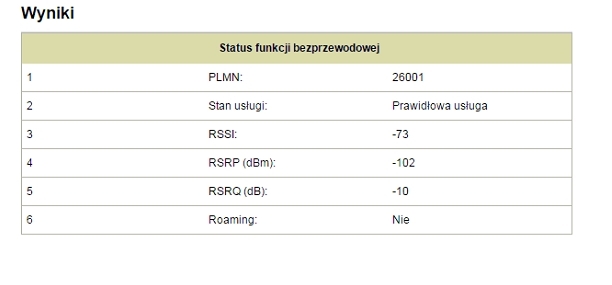
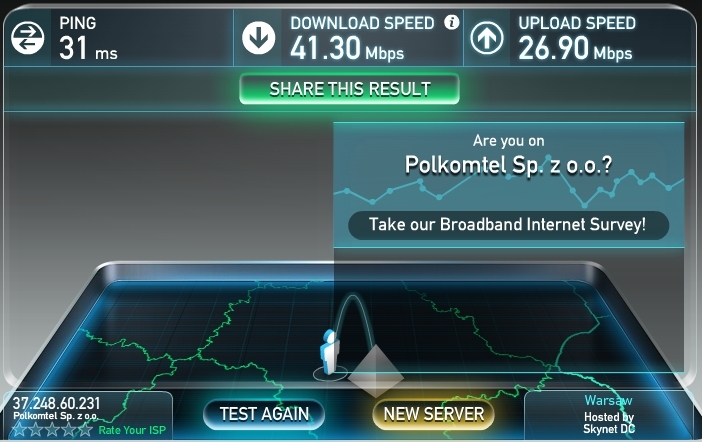
Test with an external dual panel antenna (two polarizations) - Huaweii router:
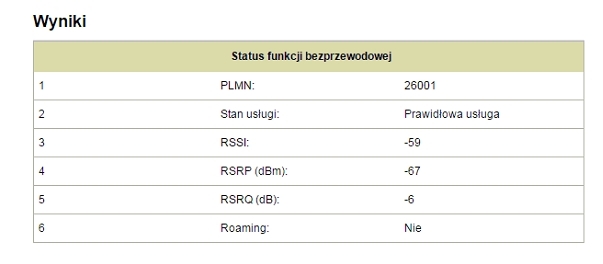
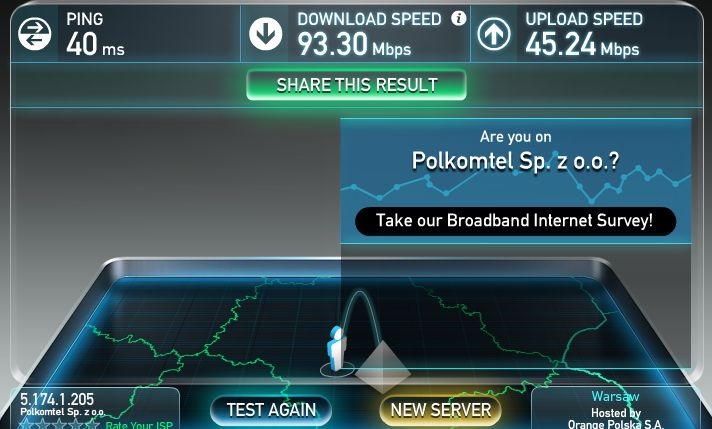
Signal measurements and BTS data
- NetMonster - universal android application that allows you to read the signal level and other data sent by the BTS in communication with our phone for mobile networks - NetMonster
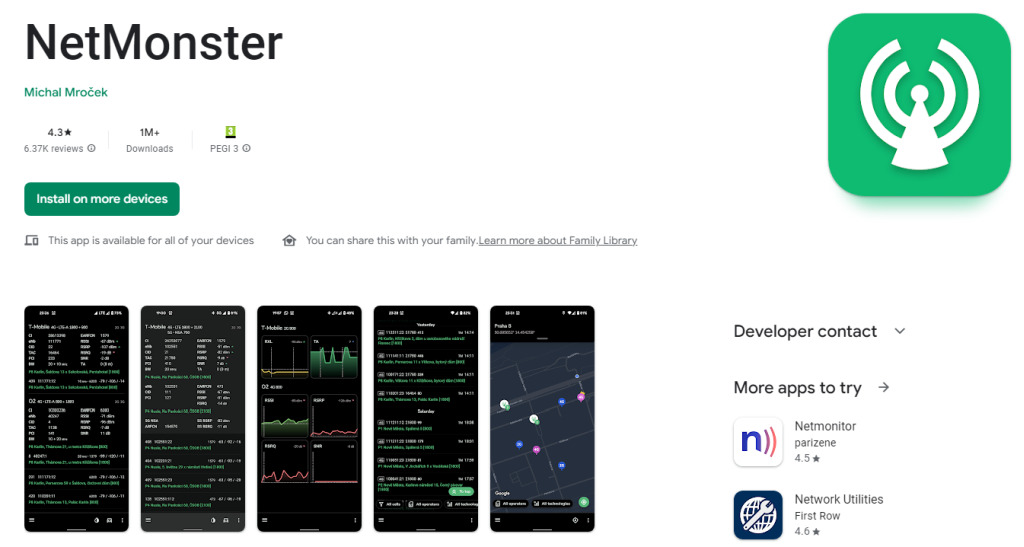
- Network Cell Info - is an application for carrying out more advanced measurements. Its indicators inform not only about the quality of the signal, but also about detailed parameters and changes over time. The information is refreshed every second and can also be viewed in graphs. The map will show the approximate location of the transmitter with which the smartphone is currently connected - link

- LTE Watch - PC application for reading signal data from Huaweii routers - link
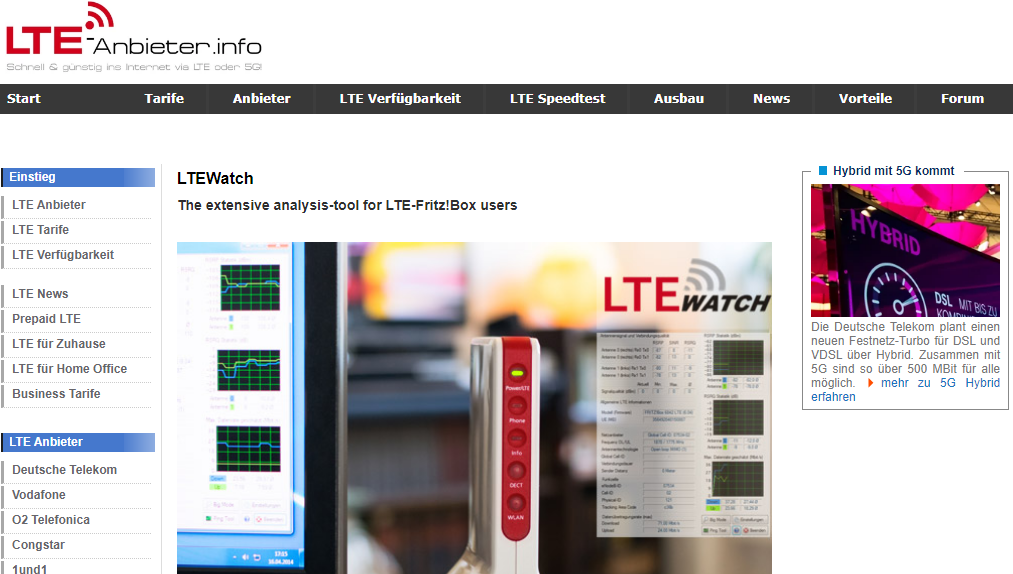 [/url]
[/url]
- HManager - android application that allows you to read the signal parameters from the Huaweii router on your phone - attachment
 [/url]
[/url]
LTE - Long Term Evolution (LTE) - a standard for wireless data transmission, which is the successor to third generation systems, developed by the 3GPP consortium. The main objectives of the new standard are to increase the possibilities of mobile telephony by increasing the speed of data transfer, reducing delays, increasing the spectral efficiency of radio links, reducing data transmission costs, and simplifying the architecture.
Frequency ranges allocated to mobile network operators - Link to UKE website
Signal parameters on frequencies used by Polish ISPs for 3G/LTE:
RSRP (dBm) - Reference Signal Receive Power - measure of signal strength
Device readings -> from -140 to -44 dBm
more than -79dBm [more than RSRP62] - very close to BTS
from -80dBm to -90dBm [RSRP61 - RSRP51] - good
from -91 to -100 [RSRP50 - RSRP41] - you need to think about changing the location of the modem / router or buying an antenna
less than -100 [less than RSRP40] - very bad, practically impossible to work.
RSRQ (dB) - Reference Signal Received Quality - measure of signal quality
Indication range - from -19.5dB to -3 dB
more than -9dB - very good, close to BTS
from -10dB to -15dB - good
from -16dB to -20dB - you need to think about changing the location of the modem / router or buying an antenna
below -20dB - very bad, practically impossible to work.
SINR (dB) - Signal-to-Interference-plus-noise Ratio - a measure of the quality of the utility signal relative to noise interference
more than 21dB - very close to BTS
from 13dB to 20dB - good
from 0dB to 12dB - you need to think about changing the location of the modem / router or buying an external antenna
less than 0dB - very bad, practically impossible to work.
RSSI (dBm) - Received Signal Strength Indicator - auxiliary measure; indicator of the received signal strength, including interference, which translates poorly into the power of the useful signal delivered to the user; higher data transfer activity, higher RSSI
more than -57dBm
from -58dBm to -79dBm
from -80dBm to -96dBm
less than -96dBm
Sample signal levels and LTE link parameters
Signal level and connection quality with built-in antennas - Huaweii router:


Test with an external dual panel antenna (two polarizations) - Huaweii router:


Signal measurements and BTS data
- NetMonster - universal android application that allows you to read the signal level and other data sent by the BTS in communication with our phone for mobile networks - NetMonster

- Network Cell Info - is an application for carrying out more advanced measurements. Its indicators inform not only about the quality of the signal, but also about detailed parameters and changes over time. The information is refreshed every second and can also be viewed in graphs. The map will show the approximate location of the transmitter with which the smartphone is currently connected - link

- LTE Watch - PC application for reading signal data from Huaweii routers - link
 [/url]
[/url] - HManager - android application that allows you to read the signal parameters from the Huaweii router on your phone - attachment
 [/url]
[/url] 



